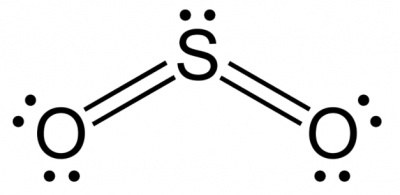Food additives: Sulphur dioxide
Food additives: Sulphur dioxide
Nowadays, the use of SO2 and sulphites comprises a wide array of food and drinks…
May 25, 2021

By Fran Navarro Fuentes
Food additives, according to the WHO, are “substances that are added to food to maintain or improve the safety, freshness, taste, texture or appearance of food”. Additives can be natural, i.e. derived from plants, animals or minerals, or synthetic. Either way, its use cannot mislead consumers and must have a technological function. For instance, salt (in meats), sugar (in marmalade) or sulphur dioxide (in wine) have been used for centuries with the main purpose of preserving food.
The international organism responsible for the safety of consumers regarding food additives is the joint FAO/WHO Expert Committee on Food Additives (JECFA). Only after a risk assessment is performed and it doesn’t represent a risk to health, a food additive can be used at specified levels for specific foods.
Focusing on sulphur dioxide (SO2) and sulphites, known in the food industry as E220-E228, these are used as preservatives due to their antimicrobial properties avoiding spoilage caused by microorganisms, and antioxidant properties inhibiting chemical and enzymatic oxidation, thus preventing food from darkening [1].
How did SO2 become an additive that was used in the wine industry? Well, back in the 8th century BC, houses and even ships were fumigated for vermin with sulfur power. Soon it was also noticed that the fresh fruits and flowers that were in the fumigated room lasted longer. In the wine industry, pitch was used to fill cracks in amphorae containing the wine. However, when used inside the clay jar, it didn’t fit the purpose as it was found to be soluble in alcohol. Despite this unfortunate inconvenient, its preservative qualities were quickly perceived preventing wine spoilage due to bacteria or yeast growth.
Nowadays, the use of SO2 and sulphites comprises a wide array of food and drinks such as snacks, biscuits, fruit juice, syrup, wine, cider and beer as well as fresh or dried vegetables and fruits, jam and marmalade, nuts, seafood and crustaceans and meat.
However, even though SO2 and sulphites are widely used due to its efficiency as food preservatives, they can cause dermatitis, urticaria, hypotension, abdominal pain and diarrhea to sensitive people and could represent a risk for asthma patients [2]. Therefore, maximum allowed concentrations are imposed by legislation and vary depending on the product [3].
References:
[1] The use of Sulphur Dioxide http://www.uwe-hofmann.org/The%20use%20of%20Sulphur%20Dioxide.pdf Last visited 4/4/21 [2] Vally H, Misso NL. “Adverse reactions to the sulphite additives.” Gastroenterology and hepatology from bed to bench vol. 5,1 (2012): 16-23. [3] List of permitted preservative for each specified food and the proportion permitted: https://www.legislation.gov.uk/uksi/1989/533/made Last visited 4/4/21